DavidGraham
Veteran
Someone dropped HL2 maps into Portal RTX, without proper calibrations or work, but the results give us a preview of sorts of what's to come.Things are advancing rapidly and I love it. Half life 2 next?
Follow along with the video below to see how to install our site as a web app on your home screen.
Note: This feature may not be available in some browsers.
Someone dropped HL2 maps into Portal RTX, without proper calibrations or work, but the results give us a preview of sorts of what's to come.Things are advancing rapidly and I love it. Half life 2 next?

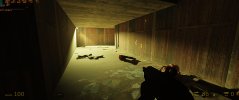

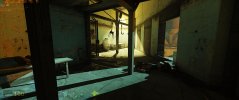
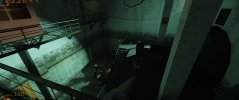
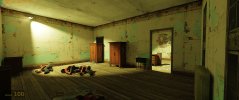
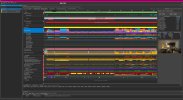
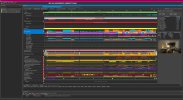

I think that the only one being butthurt here is the person who decided to come into a "RT performance comparison" thread to tell us all how they don't care about RT.Someone is mildly butthurt again over me torturing his sacred cow.
But UE5 created new problems too: Lumen needs Nanite to work with good performance, without it Lumen will be too slow. Even VSM are needed for good performance.Literally the entire point of UE5 is to bring complex lighting to multi-million poly models. Apparently you think that's "nothing new" because we can add shadows to perhaps 500 poly props in a nearly 20 year old game.
It's the 'realtime' lie. They call it that, although it's actually just 'interactive'. : )But what's up with the slow lighting? It takes seconds for lighting to normalize after firing few bullets in the dark room


I agree. There are advantages and disadvantages to both approaches. I am just disputing the claim that Epic is bringing nothing new to the table.But UE5 created new problems too: Lumen needs Nanite to work with good performance, without it Lumen will be too slow. Even VSM are needed for good performance.
With this UE5 is sacrificing a lot things: destructible and deformable objects are gone, so this wouldn't work in a game about wrecking havok with physics. Also Direct Illumination, proper shadows and reflections are sacrificed in several ways.
I am sure Epic will continue patching up their work to alleviate this though, they want engine leadership, and solving these issues is important for that.
Because Fortnite is an e-sports game that has had Nanite + Lumen bolted on, not a game built from the ground up with these technologies. Nanite enables super high fidelity models; it doesn't magically create them. This is a more representative video of what UE5 can do:No, but it looks outstanding in the open world area while running at 150FPS+ on my 4090. Does this here looks like "CGI quality assets" to you:
View attachment 7734
Would this be a $50 game people would refund it immediately.
Metro Exodus EE is an actual game build around a best in class lighting model compatible with Tessellation. So you saying that we can not use Fortnite as a comparision because it is a e-sports game?! Stop making excuses for regression. Battlefield 5 implemented Raytracing and it runs now with nearly 150 FPS (not Rotterdam) on my 4090 in 3440x1440 and these reflections are above what you see in Fortnite.I agree. There are advantages and disadvantages to both approaches. I am just disputing the claim that Epic is bringing nothing new to the table.
Because Fortnite is an e-sports game that has had Nanite + Lumen bolted on, not a game built from the ground up with these technologies. Nanite enables super high fidelity models; it doesn't magically create them. This is a more representative video of what UE5 can do:
AFAIK Battlefield 5 *only* has ray traced reflections. Metro Exodus EE uses rasterization for primary rays combined with diffuse RTGI and ray traced reflections (https://www.4a-games.com.mt/4a-dna/in-depth-technical-dive-into-metro-exodus-pc-enhanced-edition).Metro Exodus EE is an actual game build around a best in class lighting model compatible with Tessellation. So you saying that we can not use Fortnite as a comparision because it is a e-sports game?! Stop making excuses for regression. Battlefield 5 implemented Raytracing and it runs now with nearly 150 FPS (not Rotterdam) on my 4090 in 3440x1440 and these reflections are above what you see in Fortnite.
I think the efficiency of SER in Portal with RTX stands out because the small maps and simple geometries minimizes the BVH traversal overhead. Modern games like CP2077 won't get that level of improvement.Makes me wonder how Cyberpunk perf will be affected once they implement SER, even without the new settings.
I dunno about that. Intuitively speaking modern games which are highly likely to be more shading limited than traversal limited are bound to get more from SER than older games with simple shading. But it can be both ways I guess.I think the efficiency of SER in Portal with RTX stands out because the small maps and simple geometries minimizes the BVH traversal overhead. Modern games like CP2077 won't get that level of improvement.
